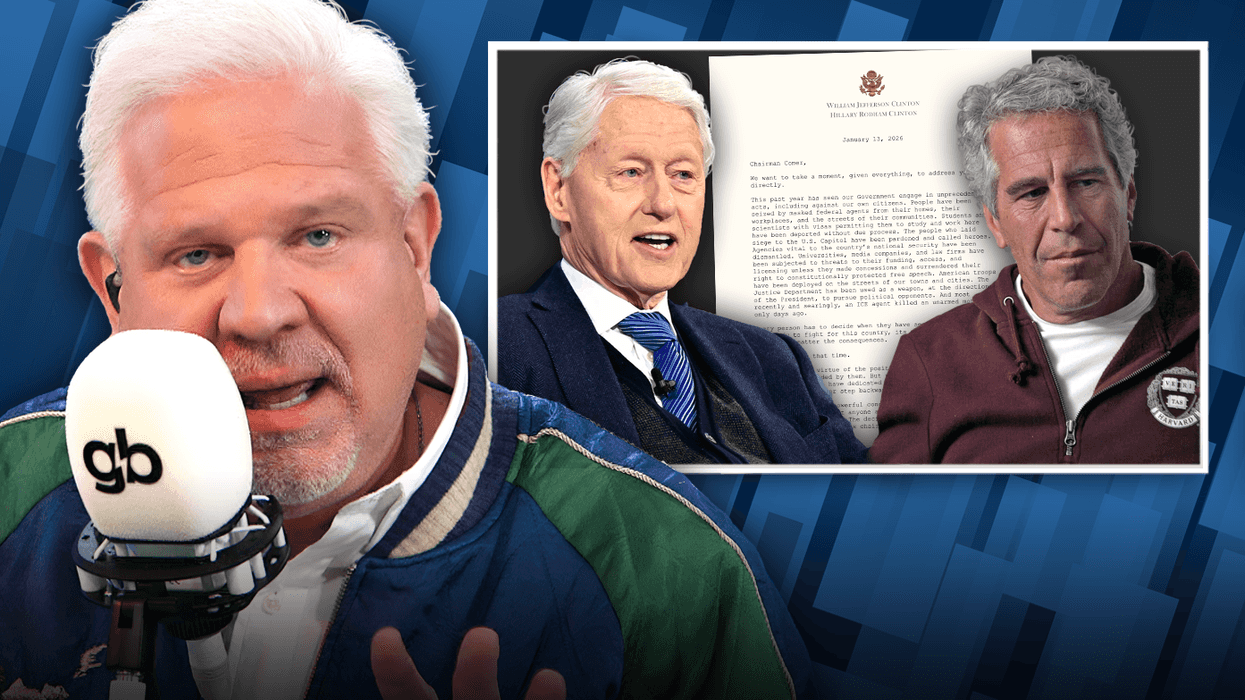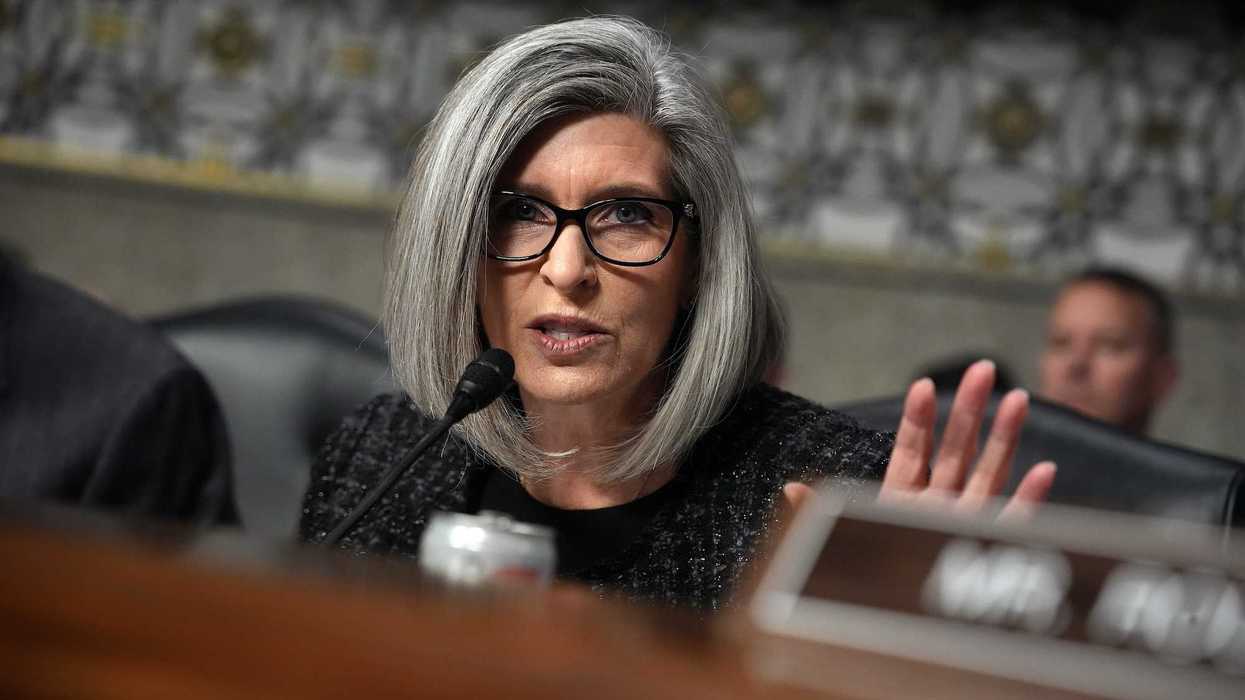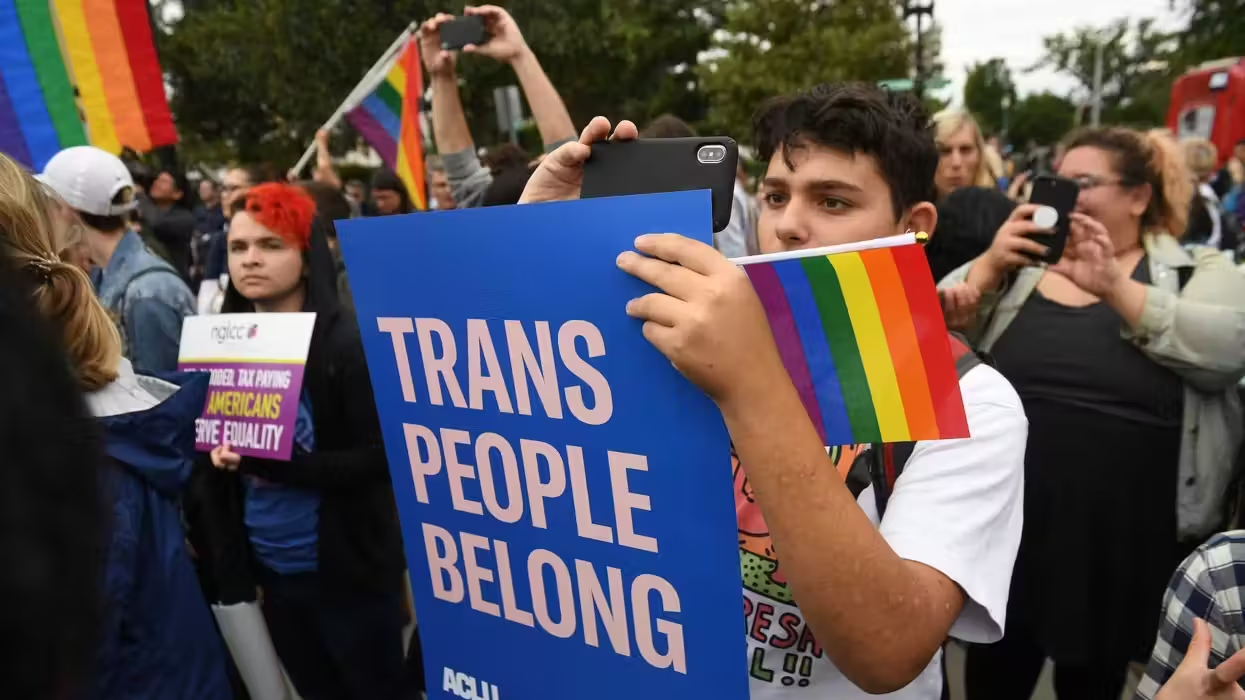
© 2026 Blaze Media LLC. All rights reserved.
NYTimes Suggests Americans Are Increasingly Embracing Socialism -- Here's Why We Aren't Convinced
November 20, 2012
The New York Times, deservedly or not, has a reputation for leaning Left.
Sometimes that leaning turns out to be simply the product of reading the facts correctly, as in the case of polling analyst and election prediction whiz Nate Silver who read the tea leaves and predicted an Obama victory.
Just as often, however, it turns out to be nothing but hot air, as in the case of New York Times columnist Paul Krugman. Such is the case with the paper's final article on the 2012 election, written by Columbia School of Journalism Professor Thomas Edsall, which practically brims with repressed glee at the thought that a socialist majority is on the horizon for America. The piece is titled, "Is Rush Limbaugh's Country Gone" and makes use of a number of charts and graphs -- nearly all of which are from Left-leaning sources -- to argue that America's next generation, diverse and multicultural as it is, will be exponentially more liberal. The evidence is seemingly quite damning, and even Limbaugh himself has cited the article as proof for his hypothesis that Americans are increasingly voting for Santa Claus over self-reliance.
The problem is that the data cited by the article is far more complicated than its author wants readers to believe, and that in some cases it was collected using questions that were so flatly leading as to render the results meaningless. Some of this data is still salvageable, but the idea that it points to an electorate that will increasingly favor high taxes and high regulation is weak, at best.
Without getting into the numerous unsubstantiated quotes that Edsall uses to prove his argument, all of which mysteriously come from Democratic pollsters, let's take a look at three of his major sources for arguing that Limbaugh's "Santa Claus" America is here to stay. Specifically, the three major surveys he cites come from the Pew Research Center, from liberal polling firm Democracy Corps, and from the Public Religion Research Institute (PRRI).
For the sake of not running on forever, we will be focusing most of our attention on the data which Edsall draws from the Pew poll. However, it is worth noting that his sources do ideologically skew one direction. Nate Silver of 538 rates Pew as having a slight leftward tilt, but only slight, while PRRI is a relative newcomer (having been founded in 2009) and Democracy Corps is an unabashedly partisan firm whose polls are written as much to set narratives as to detect data.
That's not to say that partisan polling is always wrong; left-leaning pollsters did get the most accurate results this election cycle. However, putting too much trust in opinion polling from openly partisan sources can lead to confusion. Certainly, one of the leaders of Democracy Corps - James Carville - has fallen into that trap, given that he predicted that Democrats would have a lock on power for 20 years after the 2008 election. Moreover, polling on support for candidates is a far more straightforward process than polling on economic/political attitudes, where the wording of a question can make the difference between support and opposition. These two factors combined are a trap for analysts who want to extrapolate hard truths about the electorate from what is still a soft science.
Edsall not only falls into that trap, but to the extent that his article takes the idea that support for policies he associates with Democrats (infrastructure and education spending) is synonymous with a dramatic shift leftward, he leaps into it. His evidence for skepticism of the GOP mostly focuses on increasing support for raising taxes, even though the PRRI survey itself explicitly states that most voters favor what President Obama has called a "balanced approach" - namely, a mixture of tax increases and spending cuts, though voters are divided on the question of what to cut. The fact that this nuance was completely ignored is deeply problematic.
Minority Opinions
But where Edsall really obfuscates context is in making a specific chart taken from the 2011 Pew survey mentioned above the centerpiece of his analysis. Though to be fair to Edsall, he's not alone in misreading this chart. This is the chart in question:
Now, to be sure, there is much to be concerned about in this chart. Probably the most alarming statistics are the lopsided favorable ratings blacks give to socialism, and the lopsided negative ratings that Hispanics give to capitalism. These responses indicate that the conservative economic message will almost certainly face hurdles when brought to these communities, though the Hispanic opposition to socialism indicates that they are not sold on the Democratic platform completely, either.
But there is a crucial point that one might miss looking at this chart, which is that these responses may be less ethnically baked in and more the result of socioeconomic conditions. Blacks are, on-average, much poorer than whites. In fact, most ethnic minorities in America are, on-average, poorer than whites. Why does this matter? Because the poorest people surveyed also gave low marks to capitalism, and expressed weak-to-nonexistent opposition to socialism.
As such, claiming that this is a question of entrenched racial attitudes as opposed to simply suspicion of the free market by people who perceive themselves as losing because of it is quite arguably a bridge too far. Sampling distribution is also a concern, though full crosstabs for the survey are unavailable, because if most ethnic minorities surveyed were part of poorer demographics, that could be a correlation worth noting. It is also the case that this survey was taken late last year, at the height of the Occupy Wall Street movement, when opposition to capitalism might have been higher than it is now, in the midst of a weak recovery, because of that movement's focus on spotlighting the victims of capitalism. To that end, supporters of Occupy Wall Street were included in the survey as a separate category, as readers can see from the chart.
Bottom line: Republicans do have a long way to go in reaching Hispanic and black voters on economic questions. However, the correlation between poverty and opposition to capitalism provides a potential way out, in that a message demonstrating that free enterprise is a rising tide that really does lift all boats (as opposed to 53 percent of them) could be persuasive, especially if backed up by evidence that it works in practice, and a willingness to listen to (and address) the various critiques of the free market that may underlie these groups' opposition to the system.
Young Voters
However, the one area where Edsall unequivocally overstates his case is in citing the figures on young voters. Specifically, he focuses on the statistics showing that young voters favor socialism over capitalism by a 6 point margin, and disapprove of capitalism by 1 point. This would be alarming, if not for some very important context that suggests the issue here is not so much a hard commitment to socialism, as a confusion as to the meaning of political labels. Moreover, even among the very most liberal, there may be hope for liberty-minded GOP members.
Why? Because the Pew survey includes another chart (which Edsall conveniently forgets to mention) showing that in spite of their seeming aversion to capitalism, young voters and, strangely enough, liberals are very amenable to the word "libertarian":

This might be the only case in which young people, very liberal voters and Tea Partiers get lumped into the same category, and it speaks to a fundamental confusion about labels and the intersection of different political ideas among many of those concerned. Considering that libertarianism is itself probably the most pro-capitalist ideology of the lot, it therefore seems that while young voters might be skeptical of capitalism on its own, they are very much not skeptical of the ideas of freedom and liberty, and if those can be tied into support for capitalism, there may be inroads to make there.
It is also worth noting that, like their black and Hispanic brethren, young voters are some of the hardest hit by the economic downturn, and suffering economic pain with no experience of success to temper that pain would naturally incline one to be suspicious of the market for putting them through that suffering.
Moreover, when strictly political labels -- as opposed to abstract economic labels like "capitalism" and "socialism" -- are invoked, the Pew survey shows a more even division among young voters, who don't so much reject conservatism for liberalism as they look on them with equal amounts of favorability:

In fact, among all voters, "conservative" remains the second most popular label. However, especially among listeners to shows such as the Glenn Beck program, there is a dark side to this fact, as the most popular label - one that attracts 55 percent favorability even among Republicans according to the same study -- is "progressive":

Nevertheless, the picture of Americans painted by the Pew Survey is still more nuanced than Edsall's triumphalist take would imply. Rather than a rising coalition of hard socialists, the next generation (and the demographic groups where Republicans have the most trouble) appear to be reacting much as one would expect those most hard hit by an economic downturn to react: With suspicion of the market system that made them suffer, and mixed signals on ideology. The GOP still faces messaging hurdles with this group, but the poll numbers produced by Pew suggest that they are eminently persuadable.
Ironically enough, Edsall seems to elide this question of persuadability using the same reasoning as former GOP nominee Mitt Romney:
In broader terms, the political confrontation pits taxpayers, who now form the core of the center-right coalition, against tax consumers who form the core of the center-left. According to the Tax Policy Center, 46.4 percent of all tax filers had no federal income tax liability in 2011 (although most people pay a combination of state, sales, excise, property and other levies). There are clear exceptions to this dichotomy, as many Social Security and Medicare beneficiaries (tax recipients) vote Republican, and many college-educated upper-income citizens of all races and ethnicities (tax payers) vote Democratic. Nonetheless, the overarching division remains, and the battle lines are drawn over how to distribute the costs of the looming fiscal crisis. The outcome of this policy fight will determine whether Limbaugh is correct to fear that his side has “lost the country.”
This is the "47 percent" argument with a few caveats slapped on. And for a triumphal liberal like Edsall, it should be seen more as a siren temptation than as a cause to gloat. After all, we've already witnessed one campaign that treated the 47 percent as its theory of the election. It didn't work for Romney, and alarming polling data aside, it's dramatically unlikely to work for the Left.
To be sure, there are legitimate arguments that many more in this country are approaching the government with open hands -- but the research in Edsell's piece isn't the slam dunk he thinks.
Want to leave a tip?
We answer to you. Help keep our content free of advertisers and big tech censorship by leaving a tip today.
Want to join the conversation?
Already a subscriber?
more stories
Sign up for the Blaze newsletter
By signing up, you agree to our Privacy Policy and Terms of Use, and agree to receive content that may sometimes include advertisements. You may opt out at any time.
Related Content
© 2026 Blaze Media LLC. All rights reserved.
Get the stories that matter most delivered directly to your inbox.
By signing up, you agree to our Privacy Policy and Terms of Use, and agree to receive content that may sometimes include advertisements. You may opt out at any time.






